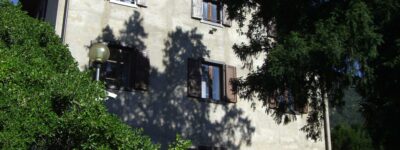Spontaneous and induced fission of very heavy and super-heavy nuclei

ECT* - Villa Tambosi
Strada delle Tabarelle, 286
Trento - Italy
In the 2nd semester of 2018 the Super Heavy Element Factory at JINR (Dubna) will deliver its first intense beam of 48Ca and experiments using a new gas filled separator and new detection modules will be carried out. The purpose is to study in details the nuclear, atomic and chemical properties of very heavy and superheavy elements with considerably improved statistics. Among the decay properties of these nuclei, particular attention will be given to nuclear fission.
In the same period the SPES facility, under development at the Laboratori Nazionali di Legnaro, Italy, is expected to enter the production stage of neutron-rich radioactive beams. With these beams the study of fission in unexplored regions of the nuclear chart will be possible, in particular in the region of very heavy neutron rich nuclei.
The main goal of the workshop is to discuss the state of the art of our present knowledge of fission and quasifission in the region of the very heavy and superheavy nuclei and to identify possible physics cases to be explored with the above two new facilities under development. These two facilities can play an extremely important and unique role in accessing, with different capabilities, unexplored regions of the nuclear chart, in particular the unknown neutron rich side. This area is particularly relevant because is of interest for the nucleosynthesis of the elements heavier that iron (r-process) and for the understanding of the existence and persistence of the shell closures. The latter are the main ingredient for the predicted survival of superheavy elements against fission.
Fundamental questions as well as unresolved problems will be on the agenda of the proposed workshop. For instance:
- How many protons and neutrons can a nucleus hold? Is the “Island of Stability” the last one?
- How does the strong Coulomb field and high nuclear density influence the fission and quasi fission processes?
- What controls the competition between alpha-decay and spontaneous fission?
- What influences most the fission half-lives: inertia, barrier height or barrier shape?
- Are there fission modes in the SF of nuclei with Z > 110?; is the most probable division symmetric or asymmetric?
The Workshop is also intended to serve as a platform for proposals regarding experimental programs during the years of operation.
The program will be organized in such a way to favor open discussions between participants. The main structure will be introductory long invited talks (40 min) followed by long discussions (15 min). A balanced mix of theoretical and experimental topics will be carefully worked out to reach the main goal of the workshop.
To contribute to make the workshop successful, we propose to the invited speakers to review the existing theoretical and experimental results concerning fusion, fission and quasifission (such as fission barriers, half-lives, branching ratios, hindrance factors, mass and TKE distributions) and to focus on the study of fission and quasifission in unexplored regions of the nuclear chart, like the terra incognita or the new island of stability, which are of profound interest for the stellar nucleogenesis and for the understanding of the survival of the shell closures.
Organizers
- Yuri Oganessian (JINR Dubna)
- Emanuele Vardaci (Università degli studi di Napoli)
- Nicolae Carjan (JINR Dubna & NIPNE-HH Bucharest)
